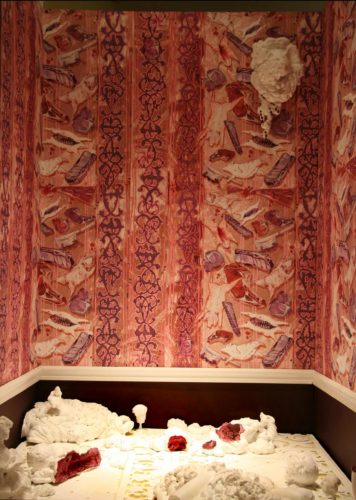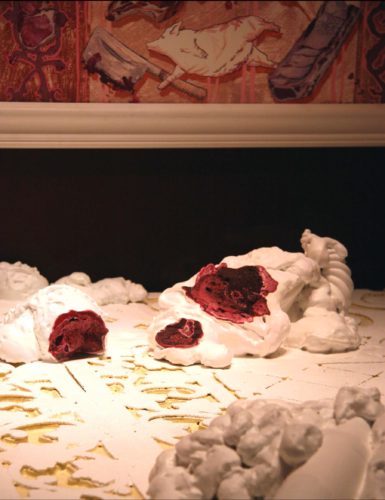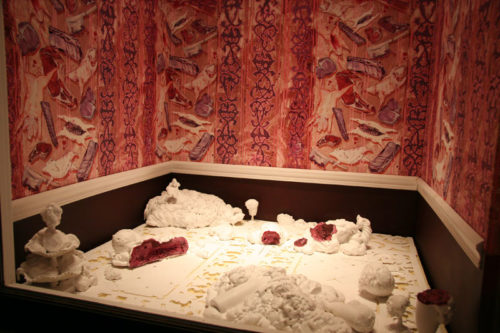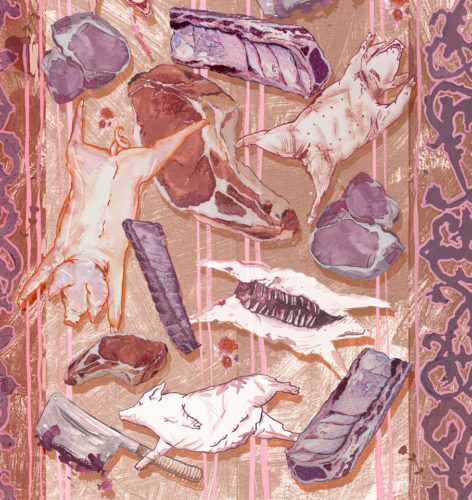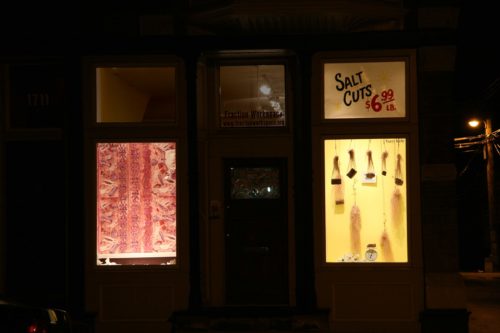Project details
“Their home! Their home! They had lost it! Grief, despair, rage, overwhelmed him‐‐what was any imagination of the thing to this heartbreaking, crushing reality of it‐‐to the sight of strange people living in his house, hanging their curtains to his windows, staring at him with hostile eyes! It was monstrous, it was unthinkable‐‐ they could not do it‐‐it could not be true! Only think what he had suffered for that house‐‐what miseries they had all suffered for it‐‐the price they had paid for it!”
‐‐ Upton Sinclair, The Jungle (1906)
After recently reading Upton Sinclair’s The Jungle in the Spring of 2006, I had been working on a series of installations, video and performance relating to the harrowing one hundred‐year‐old story of Jurgis Rudkus, the Lithuanian immigrant who experiences the American workingman’s lot in Chicago’s ‘Packingtown.’
Jungle Tender was originally installed at Fraction Workspace in April of 2006, a former butcher shop and storefront gallery space in Chicago, Illinois. The two-person exhibition was in conjunction with Stacey Kirby’s concurrent project. I constructed the illusion of a room, made up with wallpaper and found glassware, carpet, expanding foam and paint. The wallpaper is central to the content of the room. Traditional filigree imitation design; skin‐ and meat‐colored; referencing the abject imagery of dead animals and sex workers and wounded humans that assaults the senses as one reads The Jungle. The glassware, with matter spilling over and out of the openings and onto the carpet, referenced ‘Bubbly Creek,’ a particularly vile body of water described by Sinclair as running through Packingtown, consisting of the refuse of human and animal matter. I know bits of this landscape because of my experience growing up and working on a pig farm in eastern North Carolina.
My inspiration came from the domestic spaces depicted in the book, conflated with the industrial killing beds described by the main character, Jurgis. I found myself most interested in the opening scene of the wedding party, and the descriptions of the reception hall and the wedding cake and the wedding attendees. The description of the killing beds in Packingtown where Jurgis works is contrasted with his family’s struggle to preserve ownership of their house. While Jurgis and the rest of the family laboriously endures Packingtown, the domestic space the family inhabits shows signs of physical stress that replicates the emotional trauma and difficulties of the struggling immigrant population in such a harsh environment as Chicago’s Packingtown a hundred years ago.
Jungle Tender directs attention to the dreamspace of our protagonist, Jurgis. When he sleeps, what does he dream? If so, can he forget the torture and injustice of his labor, or does his subconscious swirl with matter out of bounds, the unresolved dirt and feces out of place, infecting his psyche like a sickness?
